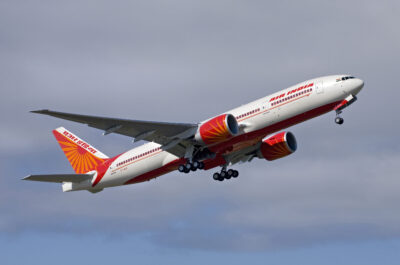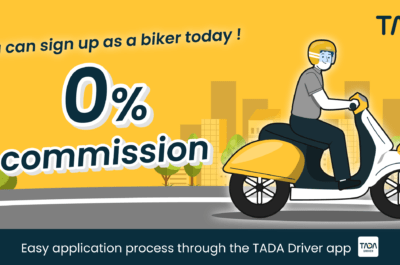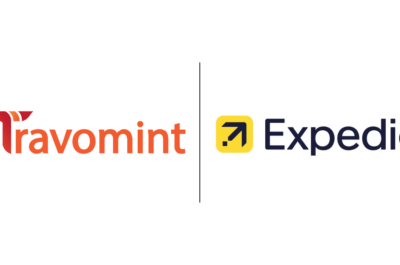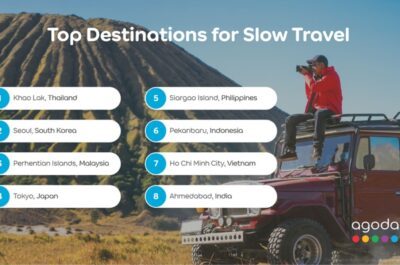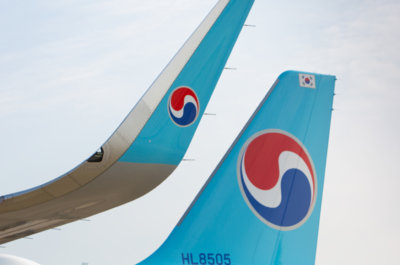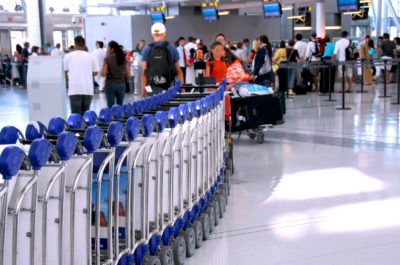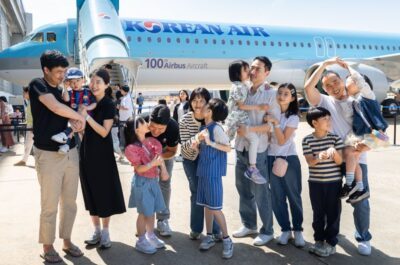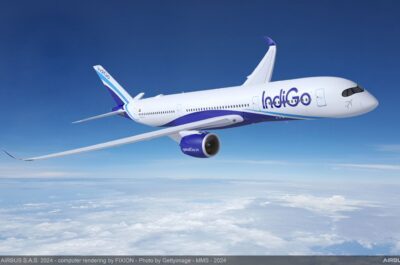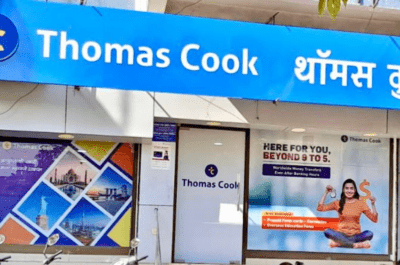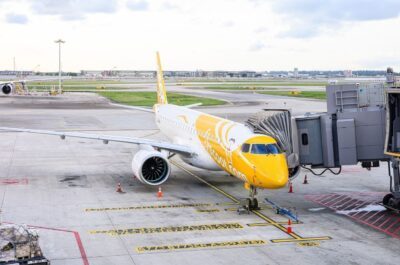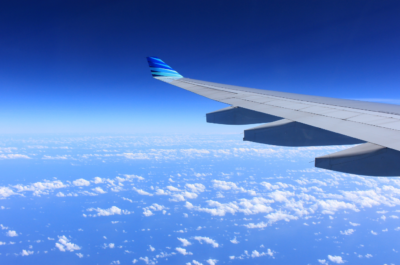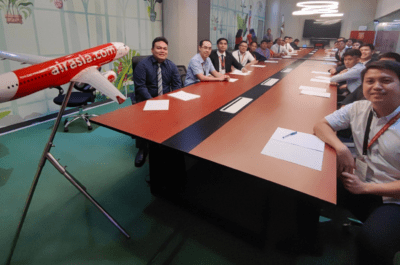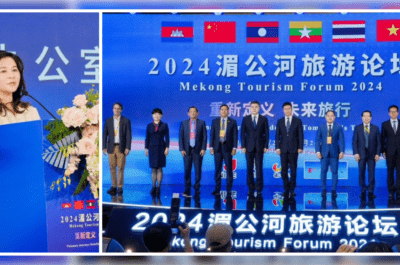Dire predictions of the eclipse of the traditional travel agent caused by the rise of the family of web-based travel solutions known as Travel 2.0 have so far been unfounded says Asia’s travel facilitator Abacus International. Travel 2.0 has delivered the mainstream travel industry a wake-up call rather than the killer blow that some industry commentators predicted says Abacus President and CEO Don Birch….
 Dire predictions of the eclipse of the traditional travel agent caused by the rise of the family of web-based travel solutions known as Travel 2.0 have so far been unfounded says Asia’s travel facilitator Abacus International. Travel 2.0 has delivered the mainstream travel industry a wake-up call rather than the killer blow that some industry commentators predicted says Abacus President and CEO Don Birch.
Dire predictions of the eclipse of the traditional travel agent caused by the rise of the family of web-based travel solutions known as Travel 2.0 have so far been unfounded says Asia’s travel facilitator Abacus International. Travel 2.0 has delivered the mainstream travel industry a wake-up call rather than the killer blow that some industry commentators predicted says Abacus President and CEO Don Birch.
“While the first wave of Travel 2.0 has clearly given the industry a wake-up call, it has also had the effect of ‘inoculating’ the mainstream travel industry. Traditional travel agents in Asia have had sufficient time to adjust common business models and indeed co-opt and adapt many of the techniques of Travel 2.0 itself,” Mr Birch says.
There are currently around 62,000 physical travel agencies in Asia, up from around 52,000 in 2003 according to Euromonitor. Offline travel sales make up a healthy 89% (or US$218 billion) of the total Asia Pacific travel market,
compared to the 11% (US$26 billion) gained in online sales according to 2007 projections from EyeforTravel Research.
This is no reason for the region’s traditional travel agents to be complacent however. The offline share of the travel market has been growing at just 2.3% CAGR from 2002-2007, compared to the bounding 49% CAGR recorded by online sales over the same period (EyeForTravel). Despite this rapid growth, Abacus estimates that less than half the region’s current travel agents have any web presence at all and fewer than10% have websites with real-time transaction facilities.
Singapore based Abacus, which manages more than 54 million airline bookings per year for both traditional agents and newer Travel 2.0 channels, is seeing clear evidence that Travel 2.0 and traditional channels can co-exist. “The emerging picture is that the travel distribution market is not a ‘zero sum game’ and that the advent of Travel 2.0 channels now attracting significant volumes of airline bookings has not all been at the expense of traditional travel agents while hybrid models are beginning to emerge,” Mr Birch said.
Examples include the habits of many consumers to ‘browse online, buy offline’, mainstream travel agents adding booking engines to what were formerly just brochure-ware sites, or even pure online agencies that are now looking for a retail footprint as recently seen in India, Mr Birch said.
Fortuitously for those traditional agents who have been slow to adapt, ongoing compound 4-6% growth of passenger numbers in Asia Pacific is growing the ‘travel pie’ for all players in the travel distribution market.
“Organic growth in the market has shielded traditional agents from the full impact of Travel 2.0 for the time being and helps explain why, to borrow a phrase from James Bond, they are ‘shaken, but not stirred’,” Mr Birch said. But with online travel bookings in Asia Pacific projected to grow from US$15.9 billion in 2005 to US$55 billion by 2010 (EyeForTravel, The Asia Pacific Online Travel Report 2007), traditional travel agencies who ignore the changes heralded by Travel 2.0 are playing with fire.
The Internet gets a social life
The term ‘Travel 2.0’ is often heard in industry circles, but what does it actually mean? The travel industry was an early adopter of the internet to provide travel information, but what exactly marked the step from Travel 1.0 to Travel 2.0?
“The defining moment was when the flow of information ceased being largely one way brochure-ware from travel agents, airlines, hotels and tourist locations to consumers – and when consumers started sharing candid and helpful travel information with each other direct,” Mr Birch said.
Don Birch says Travel 2.0 puts the customer in control. “Consumers have taken matters into their own hands to shape and design the information in the way that makes most sense to them. They navigate their own way, choose what to look at on the web, and then they share their experiences with others.”
Travel 2.0 can take many forms, from the pure form of the online travel agencies such as MakeMyTrip.com, Orbitz, or Travelocity through to sites that mix social and commercial objectives like TripAdvisor.com. Travel agents can now open a branch of their business in the virtual world Second Life or reach millions of users with the simple FaceBook application ‘Cities I’ve Visited’, which, as one of over 200 travel applications available on the site, allows users to mark on a map all the destinations they have visited.
WAYN.com, or Where Are You Now allows travellers to plot their destinations and connect with strangers who will be in the same place as them. RealTravel offers user-generated information about destinations as well as a multi-site search for fares and hotels, while VibeAgent does much the same but for hotels only.
Extending the reach of Travel 2.0 are mobile phone and PDA applications, travel blogs, search engine optimisation, tagging and folksonomy, even sites that anticipate the best time to buy flights, in fact the possible applications for Travel 2.0 are as wide-ranging as the Internet itself.
Flying the flag for Travel 2.0
The real ‘poster boys’ for Travel 2.0 are the pure Online Travel Agents (OTAs). These sites offer flights, hotels, rental car and tour packages accessed via powerful search engines that allow the user to plug in a date and destination and instantly see the entire range of prices, from budget to premium. Many OTAs have partnerships with wholesalers or airlines and hotel chains and the vast reach of the Internet allows OTAs potentially greater economies of scale.
Orbitz, like many OTAs, now has a ‘custom packages’ menu which allows users to make more complex bookings, for example combining airfare, hotel and car bookings. Travelocity has an ‘explore’ menu allowing users to do further research on possible destinations while viewing the fare details for that destination.
TripAdvisor is a hybrid between social networking and business sites as is popular site IgoUgo. With contributions from more than 10 million users, visitors to TripAdvisor can see what other similar users thought of a place and click an interactive map for flight details, hotel vacancy information, and sightseeing highlights.
“TripAdvisor works because Internet users value what other users have to say. Sites like YouTube, MySpace and FaceBook have made the opinions and ideas of regular people an influential reference on the Internet,” says Don Birch.
Half of Britons surveyed about their online purchasing habits said they abandoned a purchase when they read a negative review from another user according to research by the TAMAR Agency, while a Compete Inc. survey of online travel consumers found that 56% considered user-generated content to be credible, 20% more than those who trusted official marketing information.
The mainstream goes live
The rise of the Internet has not gone unnoticed by larger mainstream travel players. Online booking sites have long been standard for travel chains such as Starwood Hotels & Resorts Worldwide, Inc, which owns and manages the Westin, Sheraton and Le Meridian hotel chains, but they have recently embraced the new Travel 2.0 environment with the creation of theLobby.com. theLobby.com is a site where Starwood’s high-end guests can share tips and advice about particular destinations with other high-end guests. The core business for the company is still in the real world, but the Internet has given Starwood the chance for greater “buy-in” and a way of strengthening customer loyalty among premium customers.
Canada’s WestJet airline now has an online presence that goes well beyond the traditional core business of an airline. The company’s site has fares, sale offers, and group deals but also a range of partnerships with rental
companies, insurers and tourism groups around North America. “Companies such as WestJet, which are constantly looking for ways to make the travel experience easier for consumers, show how easy it is for one site to be a hub, linking a broad range of travel companies together under one roof, to create a more seamless experience for the customer,” Mr Birch says.
Where to for the traditional travel agent?
The role of travel service ‘hub’ has been traditionally filled by the ‘real world’ travel agent. The travel agent is the one-stop-shop for the consumer for accessing flights, hotels, car rentals and activities.
The fact that OTAs and other companies like airlines are now stepping into this role is unnerving for many in the industry says Don Birch, but travel agents have several strengths that can make them hard to dislodge in Asia’s
travel distribution chain.
The travel agent is usually not aligned to an airline or hotel chain, so can offer objective advice and the best deals from the widest range of sources. Secondly, with their deeper industry knowledge, agents can better manage complexity and the agent’s richer relationship with the customer enables them to elicit the traveller’s true needs and provide the optimal travel solution. Thirdly, human touch and physical presence are still important – especially when dealing with first-time travellers, older people and the security conscious.
“Travel is an emotional decision, so having a human contact makes an important difference. Many people feel more secure when dealing with a real person, a real agent,” says Don Birch.
A travel agent can put together a complex journey with fewer hiccups and can offer tailored advice as well as providing a name and a number to call if things go wrong.
Singaporean travel agency Chan Brothers, which combines retail outlets and a web address, has adopted a variety of Travel 2.0 technologies to turn the website into an online travel agency. Registered users navigating Chanbrothers.com can see and book flight details, check weather, see tours and also view other users’ holiday snaps and comments with the “My Footprints” section.
The website is more than just an online billboard for the company. Potential customers can connect with the agency and make use of the services and agents’ professional knowledge and advice even though they may be many kilometers from the actual shop front.
German company GratisTours leapt into Second Life, as well as relaunching its website, to drum up more business at home and across Europe. The company bought a holiday island in the massive virtual world of Second
Life – where people can go on a virtual holiday, share information about favourite locations and talk to GratisTour staff while wearing a virtual bathing costume and sipping a virtual margarita.
Locally, Singapore-based Safe2Travel was the first Asian based travel agency to launch in Second Life with an experimental presence earlier this year.
“Travel 2.0 is a virtual buffet. Rather than being over-awed by the possibilities, travel agents need to get online and ‘play’ with the technology. They should see what they like and, more importantly, what their customers will like, and then invest in what suits their particular business,” says Don Birch.
Taking the first step
Determining what Travel 2.0 technologies to use and how best to execute them is the challenge for real world-based agents looking to make the move online.
Over 80% of travel agents surveyed by PhoCusWright and New York University were aware of Travel 2.0 and the economic potential the technology can offer. On average, respondents had earmarked a quarter of their annual technology budget for Travel 2.0 but did not have the knowledge to develop an effective Travel 2.0 strategy.
Having a simple webpage with the bare information will not be enough for most consumers. Net-savvy customers are looking for useful research tools, so photo galleries, frequently updated descriptions of product and services and some way of interacting with an agent are a must.
Great expectations
Developing an online presence is not a license to print money cautions Don Birch and requires a continuing investment of both time and money. “It’s not a case of designing your site, going ‘live’ and watching the dollars roll in. Like any business expansion, thorough business planning is needed before a move into cyberspace,” he says.
“Blogs are only relevant to readers if they are current, user-generated content needs to be moderated to avoid abuse, mobile content must be up-to-date and users should not have to search for hundreds of pages until they find your website. Someone, somewhere must always be responsible for what is out there on the Internet with the company’s name beside it,” Mr Birch says.
The adage, “if you’re going to do it, do it right,” is especially true for web and mobile content. There are precious few seconds when a potential customer loads a webpage and decides to keep browsing or not and appearance and functionality have a lot to do with that decision.
“Throwing a fortune at the online market is no guarantee of success,” says Don Birch. “Some companies are after a niche, online customer and need to aggressively invest in Travel 2.0. But for most agents in Asia the reality of their business will be in both the real and virtual worlds.”
Abacus has staked its claim in the new Travel 2.0 landscape.
Abacus WebConnect enables individual travel agencies to connect their website to Abacus’ database of travel fares and information. This is a lowbarrier way for an agency to establish an accurate and authoritative presence on the Internet. Mobile technology is utilised with Abacus VirtuallyThere, a personalised journey tracking system that allows an agent to update a client, even when he or she is on-the-go.
Covering the bases
Agents who currently have a competitive business with no internet presence may feel they are able to maintain this position for some time. However as the internet becomes more pervasive – on computers, phones, the television and even game consoles – the pressure to log on will increase. With that comes the concern of abandoning a traditional consumer base.
“To many agents, it seems Travel 2.0 is still a mystery. So in this fluid and ever evolving world of Travel 2.0 some bricks and mortar travel companies may feel they are faced with an impossible decision. Pursue the potential new customers online or focus on servicing the traditional consumer base in the ‘real world’.” But Don Birch does not believe it has to be an either/or choice.
“Attracting new customers and supporting existing ones can be done on the Internet without conflict. Simple use of Travel 2.0 can add value to a business without forcing agents to pursue a PhD in search engine optimisation,” he says.
For agents still trying to figure out where they go next with Travel 2.0 they must determine who their customers are, or who they want them to be to dictate what Travel 2.0 technologies they adopt, rather than being seduced by the array of technical solutions on offer.
Inevitably, as the world comes to grips with Web 2.0, some pundits have already starting kicking around the term Web 3.0. What shape Web 3.0 will take is not agreed on; more sophisticated networks of information, increased linking of applications, more non-computer access to the Internet and even artificial intelligence have been suggested as the future of web technology.
Web 3.0 is still some way over the horizon. Looking back, however, companies that had a strong web presence in the early stages of the Internet were better positioned to adapt to the new Web 2.0 developments.
“As with Travel 2.0, the world is not going to change overnight,” concludes Don Birch. “The changes will be gradual but being up-to-speed on the basics and being able to adapt is the key to surviving any new developments.”







